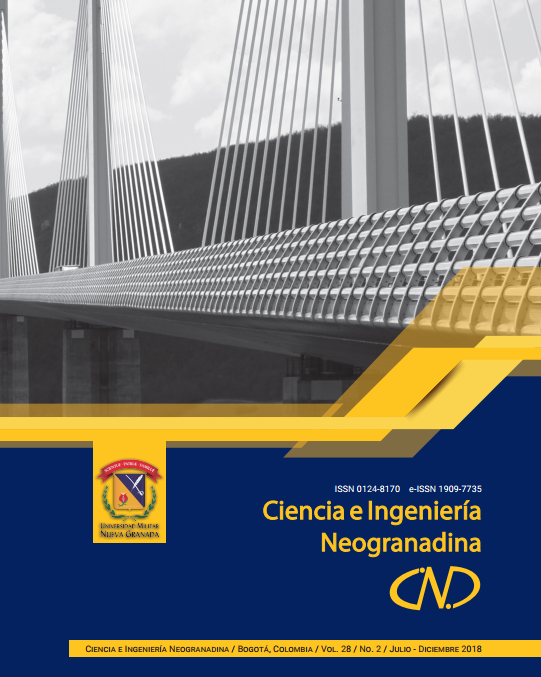Cuantification of Obstructions' Effect in the Transversal Area of a Wind Tunnel on the Calibration Results of Anemometers
Abstract
The instruments used to calculate physical quantities require periodic calibrations to ensure the reliability and accuracy of their measurements. One of the most widely used anemometer calibration methods is to directly compare the readings obtained by the anemometer to be calibrated and a standard instrument by exposing both to a gas at the same speed within a wind tunnel. However, the presence of the anemometer being calibrated creates an obstruction that can distort the velocity proƼle inside the wind tunnel. Therefore, the objective of this research was to study and model the effect of obstructions caused by anemometers being tested on velocity proƼles inside wind tunnel WSL 20 of the Corporación Centro de Desarrollo Tecnológico de Gas and, thus, evaluate their inƽuence on instrument calibration. The results show that type L Pitot tubes do not cause a signiƼcant distortion of the velocity proƼle, whereas vane anemometers of different dimensions increase the speed recorded by the standard tool, which varied between 2.5 and 5.6 %. Considering the effect of obstructions inside the wind tunnel and quantifying the bias caused by them is relevant to avoid a systematic error in the calibration process.
Downloads
References
GARCÍA L y ALFONSO J., (2014). Túnel de viento: Una solución de trazabilidad para las mediciones de velocidad de gases (Anemometría) en Colombia. En: Met&Flu. Nro. 9. pp. 54-61.
MARTIN P, RODRÍGUEZ E, LOREDO A y CAMANO E., (2014). Utilización de anemómetro de hilo caliente a temperatura constante para mediciones de velocidad de aire en túnel de viento. En: RIELAC. Nro. 35. pp. 78-92.
GARCÍA L, ANGARITA J y NARANJO O., (2010). La velocidad en gases: aspectos metrológicos. En: Met&Flu. Nro. 3. pp. 4-24.
INSTITUTO COLOMBIANO DE NORMAS TÉCNICAS Y CERTIFICACIÓN. Requisitos generales para la competencia de los laboratorios de ensayo y calibración. En: http://www.icontec.org/Paginas/Home.aspx. (Septiembre del 2016)
RIU J, BOQUÉ R, MAROTO A y RIUS X., (2005). Trazabilidad en medidas físicas mediante calibración directa: calibración de una balanza. Departamento de Química Analítica y Química Orgánica. Instituto de Estudios Avanzados. Universidad Rovira i Virgili. España, En: http://www.quimica.urv.cat/quimio/general/calbal.pdf (Noviembre 2016)











